Abstract
In order to study the effects of desiccation on a photosynthetic system, light harvesting and light-induced electron transport processes were examined in pea cotyledons at various moisture levels, using in vivo fluorescence excitation spectra and fluorescence induction kinetics. Water sorption isotherms yielded thermodynamic data that suggested very strong water binding between 4 to 11% water, intermediate sorption between water contents of 13 to 22%, and very weak binding at moisture contents between 24 to 32%. The fluorescence properties of the tissue changed with the moisture contents, and these changes correlated generally with the three regions of water binding. Peak fluorescence and fluorescence yield remained at low levels when water content was limited to the tightly bound regions, below 12%. Several new peaks appeared in the chlorophyll a excitation spectrum and both peak fluorescence and fluorescence yield increased at intermediate water-binding levels (12-22%). At moisture contents where water is weakly bound (>24%), peak fluorescence and fluorescence yield were maximum and the fluorescence excitation spectrum was unchanging with further increases in water content.
The state of water is an important component in the energy transfer and electron transport system. At hydration levels where water is most tightly bound, energy transfer from pigments is limited and electron transport is blocked. At intermediate water binding levels, energy transfer and electron transport increase and, in the region of weak water binding, energy transfer and electron transport are maximized.
Full text
PDF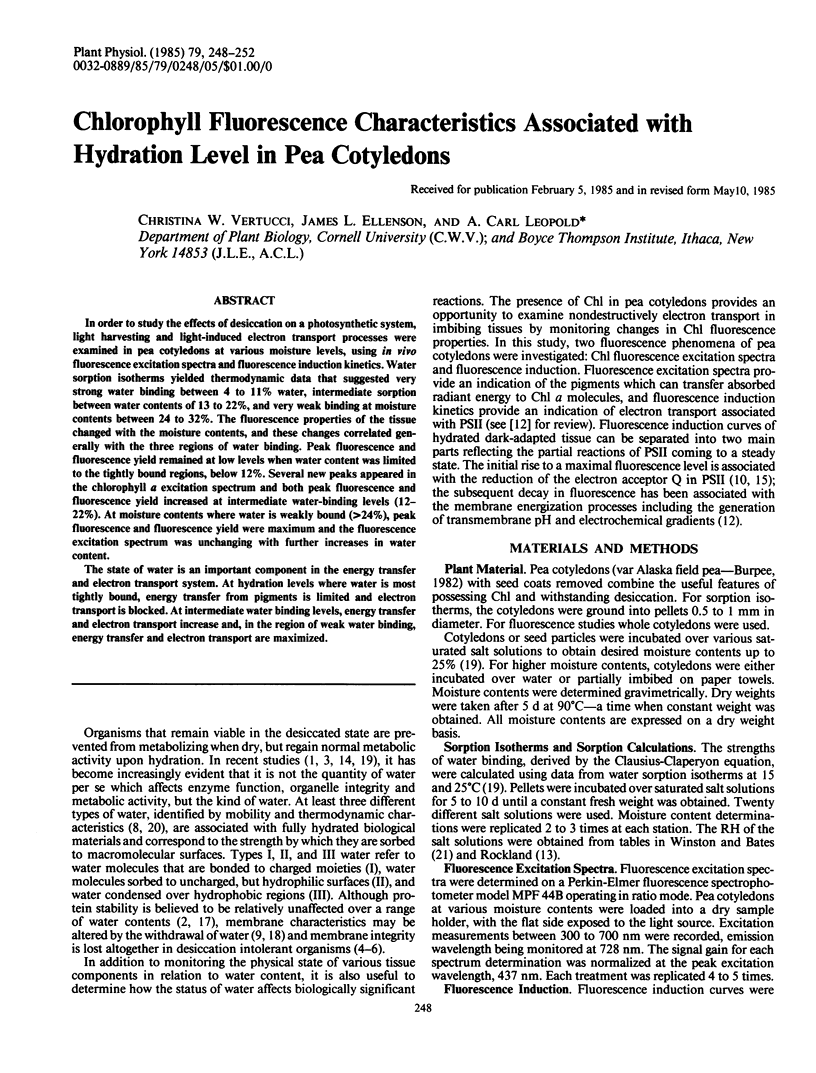
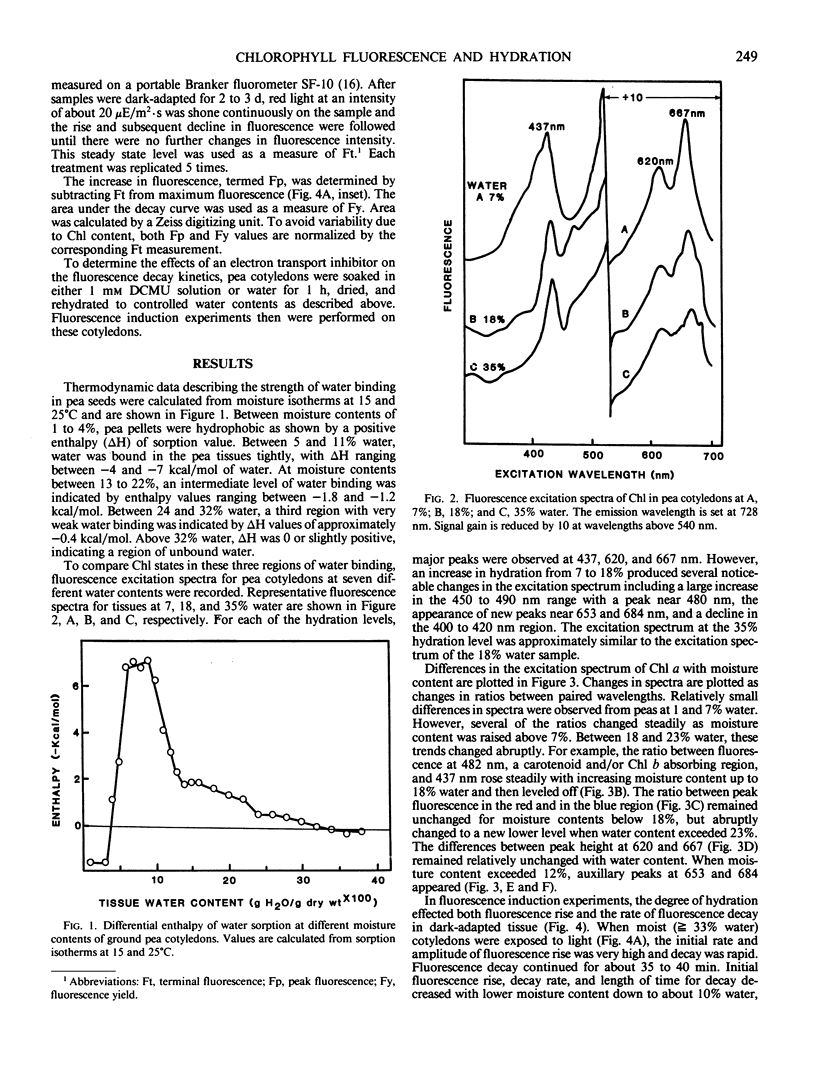
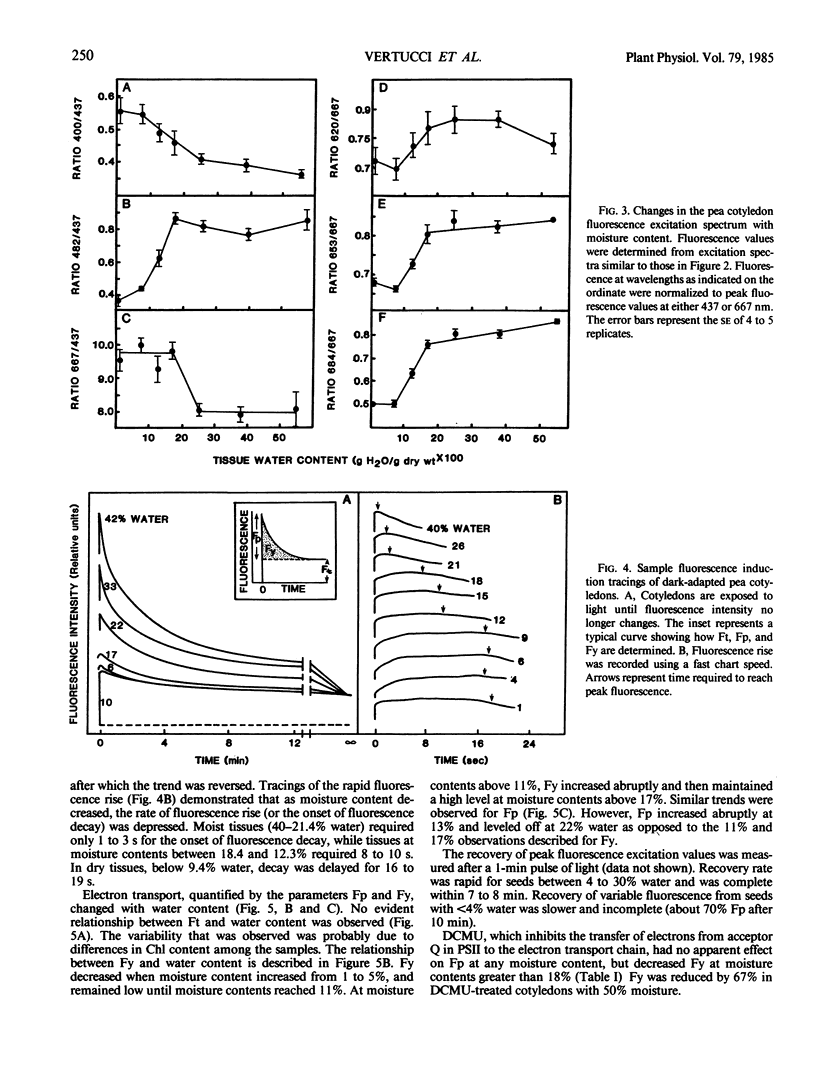
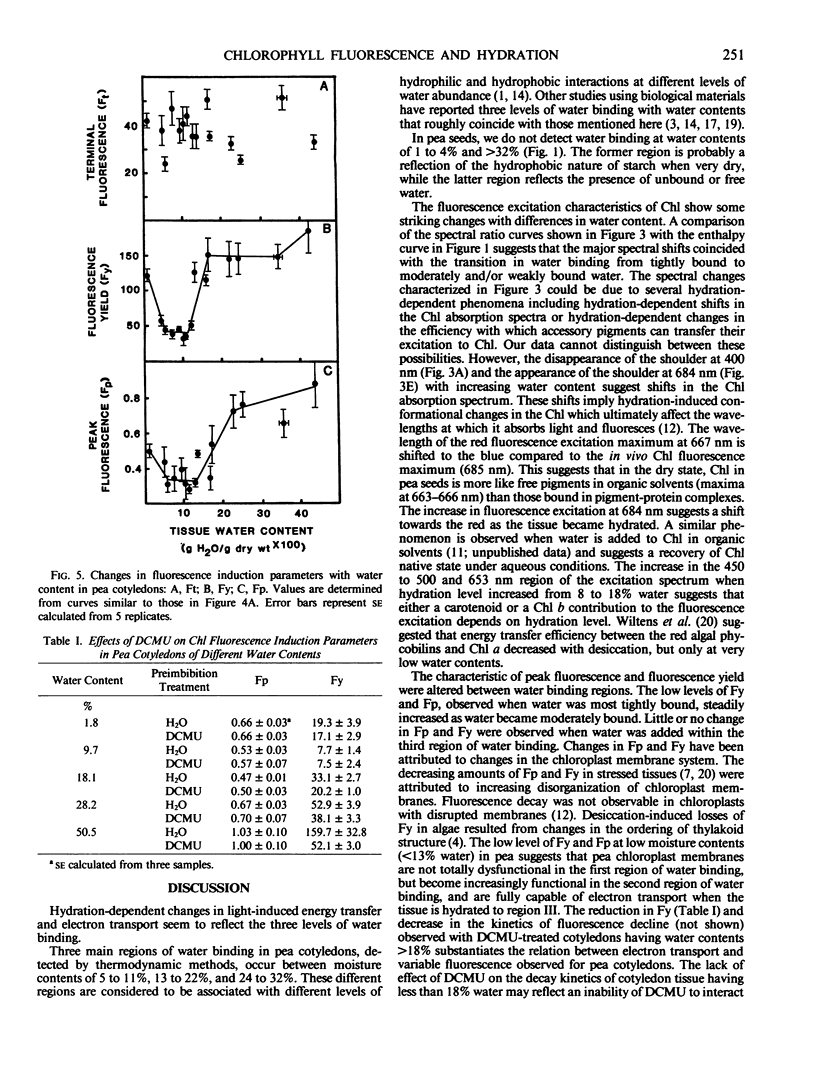
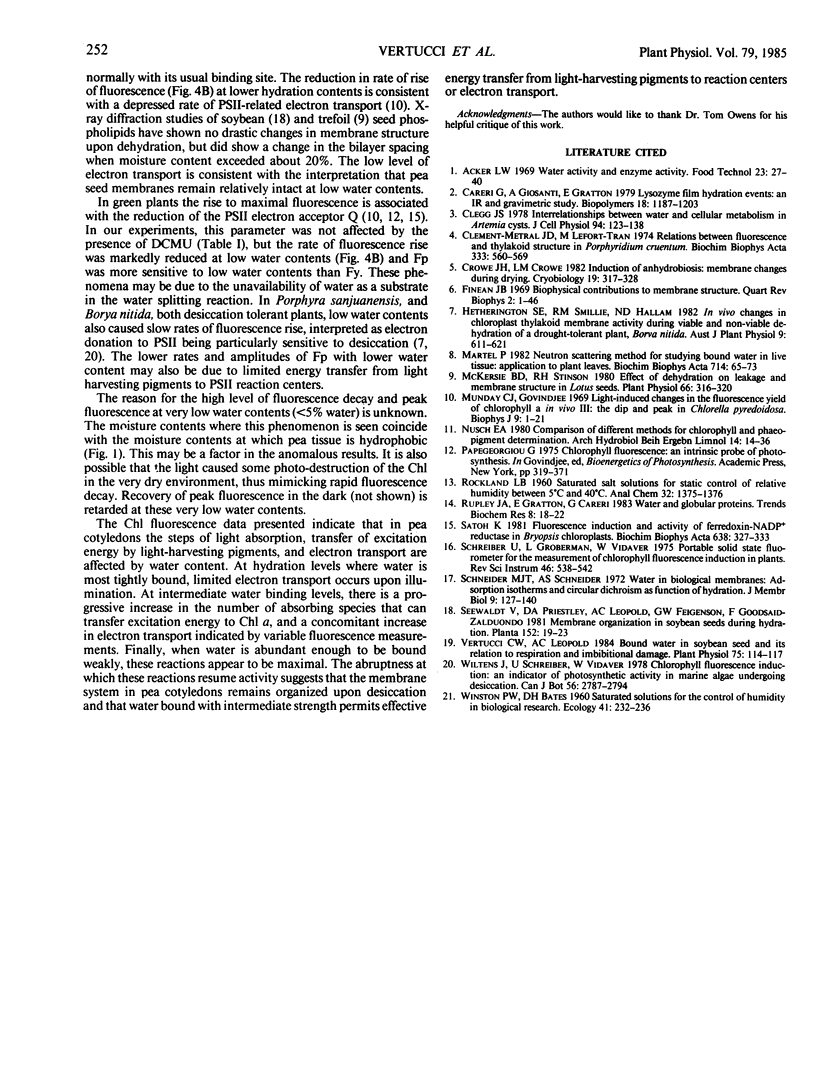
Selected References
These references are in PubMed. This may not be the complete list of references from this article.
- Careri G., Giansanti A., Gratton E. Lysozyme film hydration events: an ir and gravimetric study. Biopolymers. 1979 May;18(5):1187–1203. doi: 10.1002/bip.1979.360180512. [DOI] [PubMed] [Google Scholar]
- Clegg J. S. Interrelationships between Water and cellular metabolism in Artemia cysts. VIII Sorption isotherms and derived thermodynamic quantities. J Cell Physiol. 1978 Feb;94(2):123–137. doi: 10.1002/jcp.1040940202. [DOI] [PubMed] [Google Scholar]
- Clement-Metral J. C., Lefort-Tran M. Relations between fluorescence and thylakoid structure in Porphyridium cruentum. Biochim Biophys Acta. 1974 Mar 26;333(3):560–569. doi: 10.1016/0005-2728(74)90139-x. [DOI] [PubMed] [Google Scholar]
- Crowe J. H., Crowe L. M. Induction of anhydrobiosis: membrane changes during drying. Cryobiology. 1982 Jun;19(3):317–328. doi: 10.1016/0011-2240(82)90160-2. [DOI] [PubMed] [Google Scholar]
- Finean J. B. Biophysical contributions to membrane structure. Q Rev Biophys. 1969 May;2(1):1–23. doi: 10.1017/s0033583500000779. [DOI] [PubMed] [Google Scholar]
- McKersie B. D., Stinson R. H. Effect of Dehydration on Leakage and Membrane Structure in Lotus corniculatus L. Seeds. Plant Physiol. 1980 Aug;66(2):316–320. doi: 10.1104/pp.66.2.316. [DOI] [PMC free article] [PubMed] [Google Scholar]
- Munday J. C., Jr, Govindjee Light-induced changes in the fluorescence yield of chlorophyll A in vivo. 3. The dip and the peak in the fluorescence transient of Chlorella pyrenoidosa. Biophys J. 1969 Jan;9(1):1–21. doi: 10.1016/s0006-3495(69)86365-4. [DOI] [PMC free article] [PubMed] [Google Scholar]
- Schneider M. J., Schneider A. S. Water in biological membranes: adsorption isotherms and circular dichroism as a function of hydration. J Membr Biol. 1972;9(2):127–140. [PubMed] [Google Scholar]
- Vertucci C. W., Leopold A. C. Bound water in soybean seed and its relation to respiration and imbibitional damage. Plant Physiol. 1984 May;75(1):114–117. doi: 10.1104/pp.75.1.114. [DOI] [PMC free article] [PubMed] [Google Scholar]


